
The Substitute Standard ("Last Ditch") Model 99
At the close of the war, many changes were made to the Model 99. The crude appearance is perhaps the main reason some novice collectors refer (incorrectly)to this as the "last ditch."

Picture number 501 (picture courtesy of Shannon Zeigler) shows a typical substitute standard Model 99.
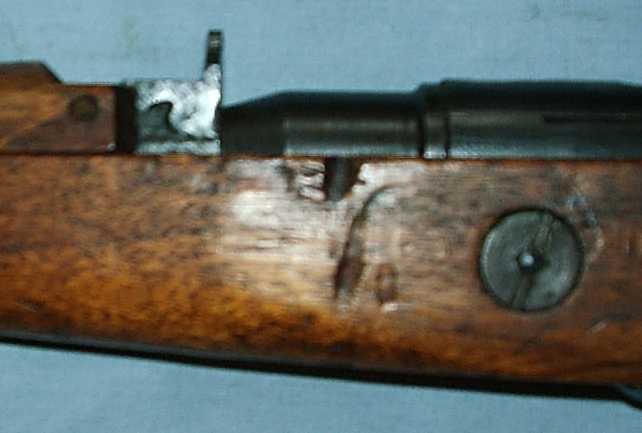
Picture number 502 (picture courtesy of Shannon Zeigler) shows the simplified fixed rear peep sight and the large recoil shoulder nut.
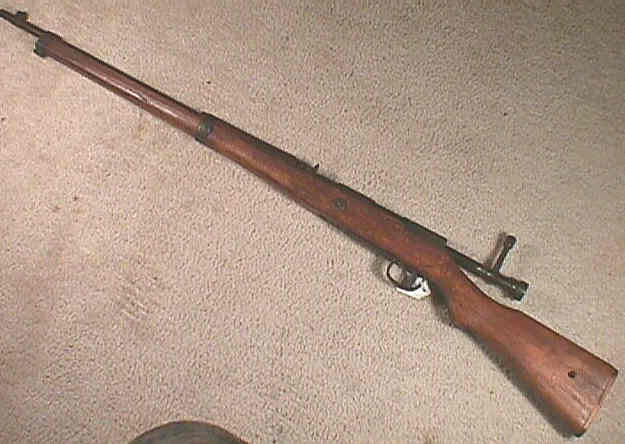
Picture number 505 (picture courtesy of Earl Battey) shows a Nagoya 11th series rifle that has a hole in the stock for a rope sling as opposed to the normal sling swivels found on most Model 99 rifles. This rifle was also made with no dust cover grooves.
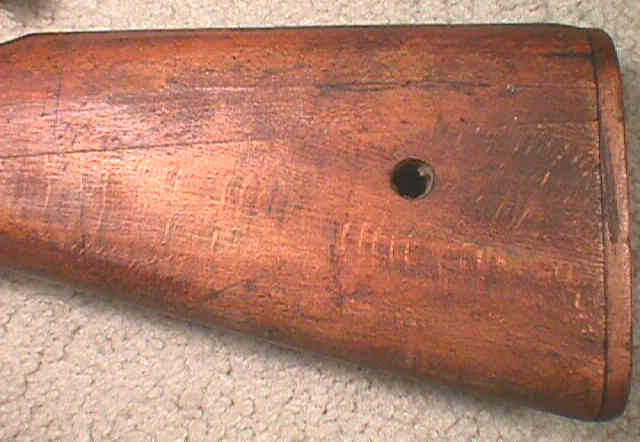
Picture number 506 (picture courtesy of Earl Battey) shows a close up view of the rifle described in picture number 505.
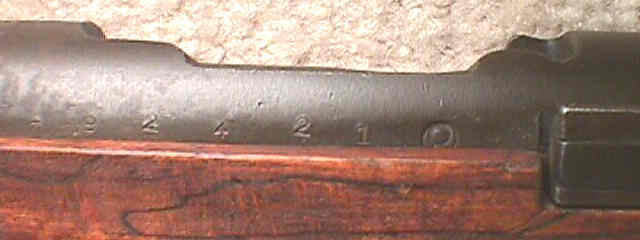
Picture number 507 (picture courtesy of Earl Battey) shows the left side of the receiver of the rifle described in picture number 505. Note the absence of grooves for the dust cover.

Picture number 508 (picture courtesy of Earl Battey) shows the middle band of the rifle described in picture number 505.
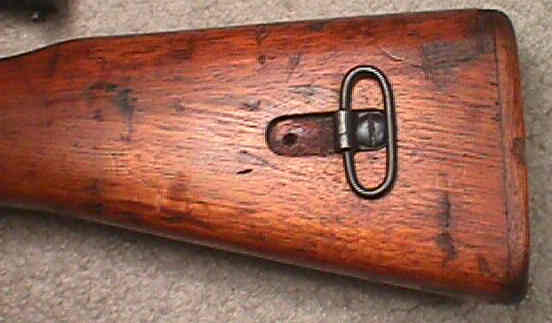
Picture number 520 (picture courtesy of Earl Battey) shows the buttstock of an early 27th series rifle made by Tokyo Juki Kogyo. The first 5000 rifles of this series were built on previously rejected early Model 99 rifle stocks. The rear sling swivel in the picture is the one screw model although the stock has been inletted for the early two screw rear sling swivel.
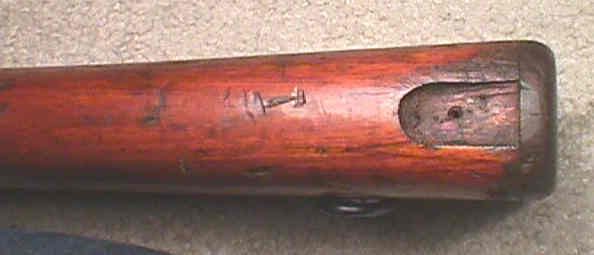
Picture number 521 (picture courtesy of Earl Battey) shows a top view of the buttstock of the rifle described in picture number 520. Although the buttplate is wooden, the stock was originally inletted for the metal buttplate.
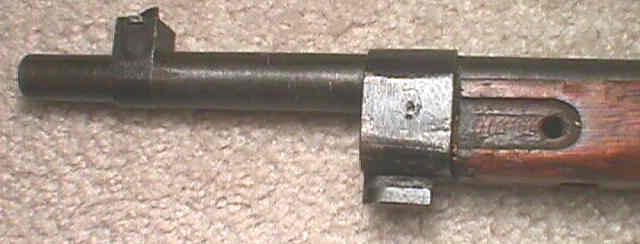
Picture number 522 (picture courtesy of Earl Battey) shows the front band of the rifle described in picture number 520. The stock was originally inletted for the earlier style front band.
Return to to Model_99 Section